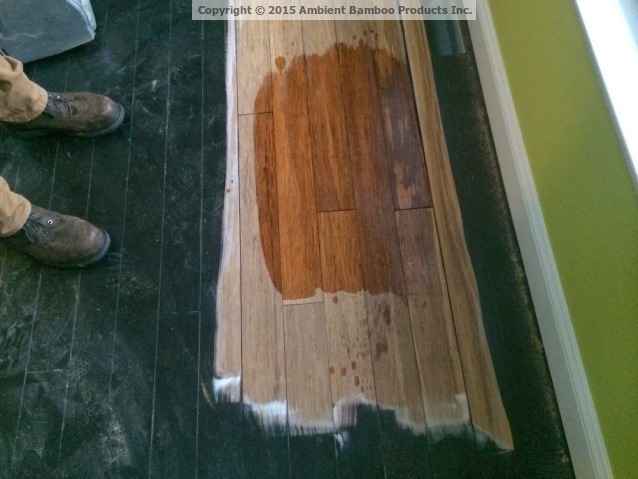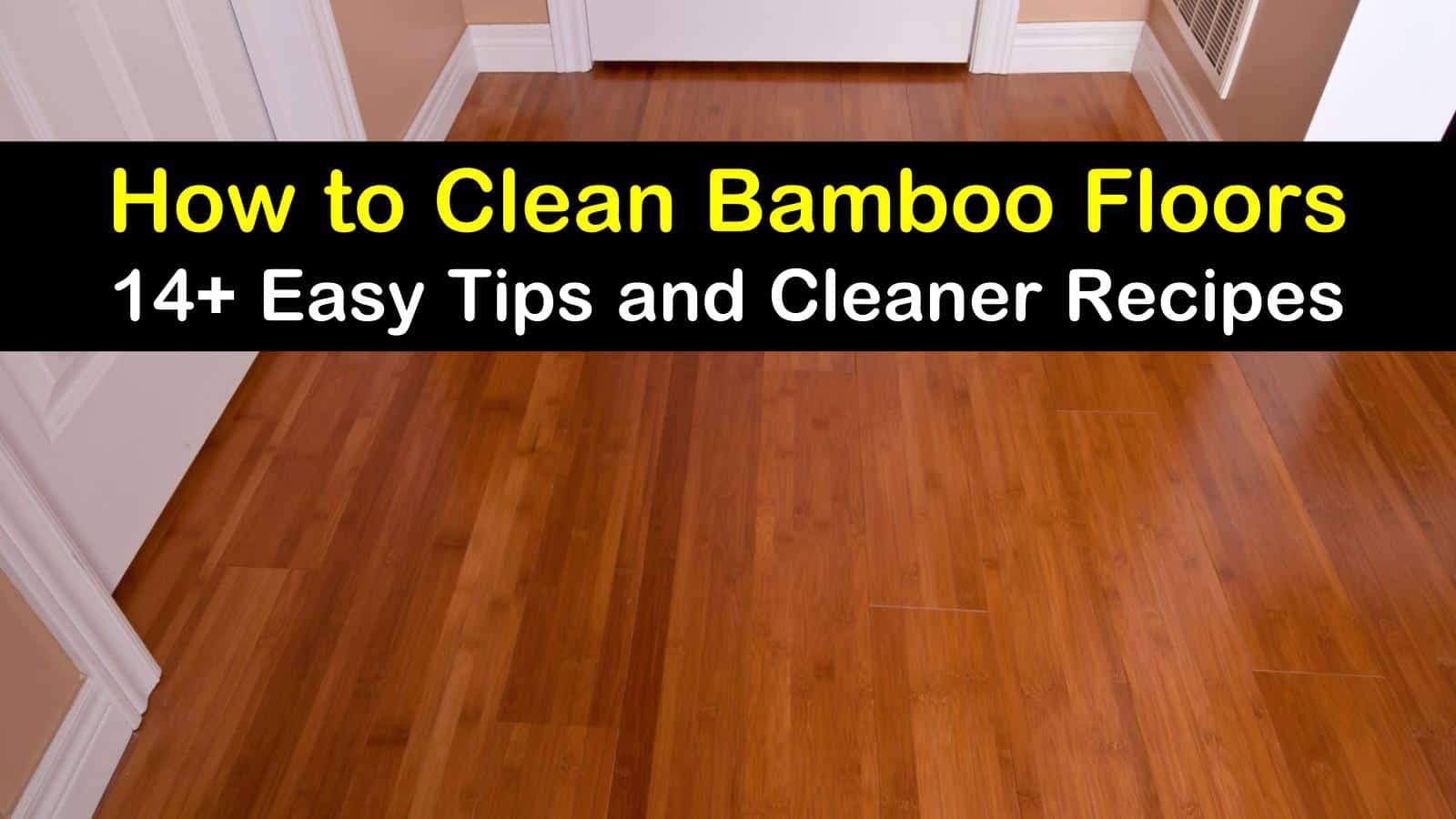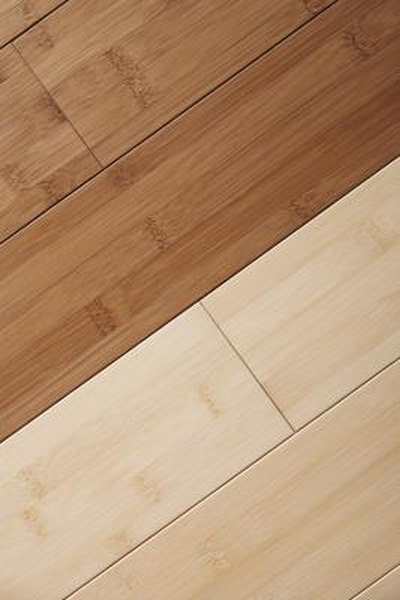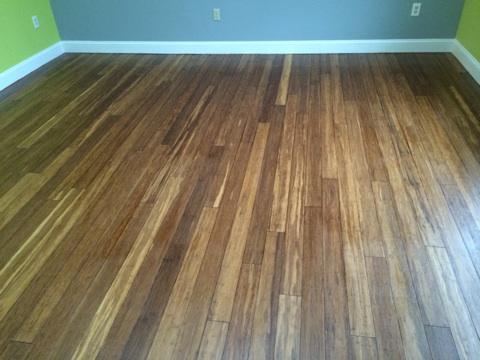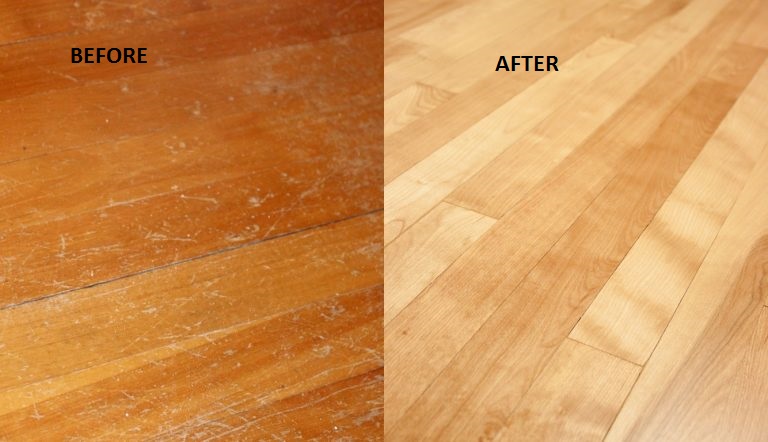The Characteristics of Bamboo Flooring
When I first encountered bamboo flooring, I was immediately drawn to its unique blend of beauty, durability, and eco-friendliness. Unlike traditional hardwoods, bamboo is technically a grass, which gives it some fascinating characteristics that set it apart. If you’re considering bamboo floors or already have them, understanding these characteristics is key to making the most of this sustainable material.
- Rapid Renewal and Sustainability One of the most compelling reasons I chose bamboo flooring is its rapid growth rate. Unlike hardwood trees that can take decades to mature, bamboo can be harvested every 3 to 5 years. This fast regeneration makes bamboo an environmentally friendly option, perfect for those of us who are looking to reduce our carbon footprint. It’s incredible to think that my floor is made from a material that grows so quickly and renews itself with such ease.
- Hardness and Durability Many people, including myself, are surprised to learn just how hard bamboo flooring can be. Depending on the type of bamboo, it can be as hard or even harder than traditional hardwoods like oak. Strand-woven bamboo, in particular, is known for its extreme toughness. This was a huge selling point for me because I wanted a floor that could withstand the wear and tear of daily life, from high foot traffic to the occasional dropped item.
- Moisture Sensitivity While bamboo is durable, I quickly learned that it does have some vulnerabilities, especially when it comes to moisture. Bamboo floors can swell, warp, or even develop mold if exposed to excessive moisture. This was a concern for me since I live in a humid area. However, with proper care, including regular sealing and humidity control, I’ve managed to keep my floors looking great. It’s essential to be mindful of moisture levels to preserve the longevity of bamboo.
- Aesthetic Versatility One of the things I love most about bamboo flooring is its aesthetic versatility. Bamboo offers a range of colors and finishes, from the natural light tones that highlight its grain patterns to darker, carbonized shades that give it a rich, warm appearance. I had the option to choose a finish that complemented my home’s decor perfectly. Plus, the unique grain of bamboo adds a touch of natural beauty that’s both modern and timeless.
- Eco-Friendly Production Process The eco-friendly aspect of bamboo flooring extends beyond its growth. I found out that the production process for bamboo flooring typically uses fewer chemicals compared to other types of flooring. Additionally, many manufacturers ensure that the adhesives and finishes are low in volatile organic compounds (VOCs), contributing to better indoor air quality. This was a huge bonus for me, knowing that my home environment would be healthier.
- Cost-Effectiveness Finally, I was pleasantly surprised by the cost-effectiveness of bamboo flooring. While it’s not the cheapest option available, bamboo offers a great balance between cost and durability. It provided me with a high-quality, long-lasting floor without breaking the bank. When considering long-term investment and environmental impact, bamboo flooring stands out as a smart choice.

Why Staining Bamboo Floors Requires Special Care
When I first thought about staining my bamboo floors, I assumed it would be just like staining any other wood floor. However, as I dug deeper, I realized that bamboo requires a different approach. The unique composition of bamboo, combined with its specific characteristics, means that staining requires special care to achieve the desired results.
Bamboo’s Natural Density One of the first things I learned is that bamboo’s natural density plays a significant role in how it absorbs stains. Unlike traditional hardwoods, which can absorb stains relatively evenly, bamboo’s tightly packed fibers make it more resistant to stain penetration. This means that staining bamboo requires patience and precision. Rushing through the process can lead to uneven coloring, which was something I wanted to avoid.
The Impact of Carbonization Many people, including myself, are drawn to the rich, dark tones of carbonized bamboo. However, I soon discovered that carbonization affects more than just the color. The heat treatment process that gives bamboo its darker hue also softens the fibers, making the material more susceptible to damage and less receptive to stains. I realized that staining carbonized bamboo would require extra care and potentially different techniques than staining non-carbonized bamboo.
Potential for Uneven Staining One of the challenges I faced was the potential for uneven staining. Bamboo has a natural variation in density across its surface, which can cause certain areas to absorb more stains than others. To combat this, I knew I would need to apply the stain in thin, even coats, and potentially use a pre-stain conditioner to help even out the absorption. This step is crucial for achieving a uniform finish and avoiding blotchy or streaky results.
Choosing the Right Type of Stain I quickly learned that not all stains are suitable for bamboo floors. Oil-based stains, which work well on hardwoods, might not be the best choice for bamboo. Water-based stains, on the other hand, offer better control and tend to be more compatible with bamboo’s structure. I found that doing a test patch on an inconspicuous area of the floor was essential before committing to a particular stain. This allowed me to see how the bamboo reacted and adjust my technique accordingly.
The Importance of Proper Preparation Proper preparation is key when staining bamboo floors. I had to make sure the surface was clean, smooth, and free of any existing finishes or waxes. Any residue left on the bamboo could interfere with the stain’s ability to penetrate the surface. Sanding the floor evenly was another critical step, as it opened up the bamboo’s pores and allowed the stain to be absorbed more consistently. Skipping this preparation could result in a flawed finish that I knew I’d regret later.
Sealing and Protecting the Finish After going through the staining process, I realized that sealing and protecting the finish is just as important as the staining itself. Bamboo, like any wood, can fade or become damaged if not properly sealed. Applying a high-quality sealer helps to lock in the stain, protect the bamboo from moisture, and preserve the color over time. This final step was crucial in ensuring that all my hard work resulted in a beautiful, long-lasting finish.
Choosing the Right Stain for Bamboo Floors
When it came time to choose the right stain for my bamboo floors, I quickly realized that this decision was more complex than I initially thought. Bamboo, with its unique characteristics, demands careful consideration of stain type, color, and finish. Making the right choice can transform the look of your floors and ensure they complement your home’s overall design.
Understanding Stain Types I started by exploring the different types of stains available. There are two main categories: oil-based and water-based stains. Oil-based stains penetrate deeper into the material, offering rich colors and a longer drying time, which can be advantageous for large projects. However, I found that water-based stains are generally preferred for bamboo due to their faster drying time and compatibility with bamboo’s structure. They also emit fewer fumes, which was important to me as I wanted to minimize indoor air pollution.
Considering Color Options Choosing the right color was one of the most exciting parts of the process for me. Bamboo flooring can be stained in a wide range of colors, from light, natural tones to deep, rich hues. I wanted to ensure that the color I chose would not only match my existing decor but also highlight the natural beauty of the bamboo grain. I found it helpful to bring home several stain samples and test them on a small section of the floor. This allowed me to see how the color would look in different lighting conditions and helped me avoid any unpleasant surprises.
Testing for Compatibility Before committing to a stain, I knew it was crucial to test its compatibility with the bamboo. Bamboo can be finicky when it comes to absorbing stains, and different types of bamboo (e.g., strand-woven, vertical, or horizontal) may react differently. I tested the stain on a small, hidden area of the floor to see how it absorbed and dried. This step gave me peace of mind, knowing that the stain would work well with my specific type of bamboo flooring.
Considering the Finish The finish is just as important as the stain itself. I discovered that some stains come with a built-in finish, while others require a separate topcoat. The finish not only affects the appearance of the floor but also its durability. I opted for a clear, water-based polyurethane finish to enhance the natural look of the bamboo while providing a strong protective layer. This finish also added a subtle sheen, which I found to be a nice touch that made the floors look more polished.
Balancing Aesthetics and Functionality As much as I wanted my floors to look beautiful, I also had to consider the functionality of the stain. Since bamboo floors can be sensitive to moisture, I chose a stain that offered some level of moisture resistance. Additionally, I looked for a product that was easy to maintain and wouldn’t show wear too quickly. Balancing aesthetics with practicality ensured that my floors would not only look great but also stand up to daily use.
Seeking Professional Advice Finally, I realized that seeking professional advice could be invaluable when choosing a stain. I consulted with a flooring specialist who had experience with bamboo. They were able to recommend specific products and techniques that I might not have considered on my own. This advice helped me make an informed decision and gave me confidence that I was using the best possible products for my bamboo floors.
Preparing Your Bamboo Floors for Staining
Before diving into the actual staining process, I knew that proper preparation was key to achieving the best results. Staining bamboo floors isn’t just about applying the stain; it’s about setting the stage for a smooth, even finish. Here’s how I went about preparing my bamboo floors for the big transformation.
Cleaning the Surface Thoroughly The first step I took was to clean the floors meticulously. Bamboo flooring tends to accumulate dust, dirt, and even oils from everyday use. I used a mild wood floor cleaner to remove any grime, followed by a thorough rinse with clean water. Ensuring the surface was completely clean was crucial because any residue left on the floor could prevent the stain from penetrating evenly. I also made sure the floor was completely dry before moving on to the next step.
Sanding the Bamboo Floors Sanding the floors was the next critical step. Bamboo has a smooth surface, but for the stain to adhere properly, it needs to be slightly roughened. I used fine-grit sandpaper, around 120-150 grit, to lightly sand the surface of the bamboo. This process opened up the pores of the bamboo, allowing the stain to be absorbed more evenly. I made sure to sand in the direction of the grain to avoid any unsightly scratches. After sanding, I vacuumed up all the dust and wiped the floors down with a damp cloth to ensure a clean, smooth surface.
Addressing Any Imperfections During the sanding process, I noticed a few imperfections in the bamboo, such as small scratches or dents. I knew that these would become more noticeable after staining, so I took the time to address them. For minor scratches, I used a fine wood filler that matched the color of the bamboo. After filling, I lightly sanded the areas again to ensure a seamless finish. Taking care of these imperfections beforehand ensured that the stain would go on smoothly and that the final result would be flawless.
Applying a Pre-Stain Conditioner Given bamboo’s tendency to absorb stains unevenly, I decided to apply a pre-stain conditioner. This product helps to even out the absorption rate across the bamboo surface, reducing the risk of blotchiness or streaking. I applied the conditioner with a clean, lint-free cloth, making sure to cover the entire floor evenly. The conditioner needed to be allowed to sit for about 15 to 30 minutes before staining. This step gave me peace of mind that the stain would go on smoothly and uniformly.
Protecting Adjacent Surfaces As someone who’s a bit of a perfectionist, I didn’t want to risk getting stains on my baseboards or adjacent surfaces. I took the time to tape off the edges of the room with painter’s tape and lay down plastic sheeting to protect any areas that might be exposed to accidental splashes. This step might seem minor, but it made a big difference in keeping the staining process clean and controlled.
Final Inspection Before Staining Before I opened the can of stain, I did one final inspection of the floors. I walked the entire space, looking for any areas that might need additional sanding or cleaning. I also made sure that the room was well-ventilated and that I had all my tools ready to go. Being thorough in this final inspection ensured that once I started staining, I could focus entirely on the task at hand, knowing that the floors were perfectly prepped for the best possible outcome.
Step-by-Step Guide to Staining Bamboo Floors
After all the preparation, it was finally time to dive into the actual staining process. Staining bamboo floors can be a bit daunting, but with careful attention to detail, the results can be stunning. Here’s the step-by-step guide I followed to transform my bamboo floors.
Choosing the Right Tools Before I even opened the can of stain, I made sure I had all the necessary tools on hand. I used a high-quality stain brush for detailed areas and a foam applicator pad for larger sections. Having the right tools is crucial because they help ensure an even application. I also kept plenty of clean, lint-free cloths nearby for wiping away excess stains. Preparation is half the battle, and being fully equipped made the process smoother and more efficient.
Stirring the Stain Thoroughly One of the first lessons I learned was the importance of stirring the stain thoroughly before applying it. Stain pigments can settle at the bottom of the can, so stirring helps ensure a consistent color. I used a stir stick to mix the stain well, being careful not to shake the can, as that can introduce bubbles that might affect the finish. This step might seem minor, but it’s essential for achieving a uniform look across the entire floor.
Applying the Stain When it came time to apply the stain, I worked in small sections to maintain control and ensure even coverage. I started at the farthest corner of the room and worked my way toward the exit to avoid stepping on the freshly stained floor. Using the foam applicator pad, I applied the stain in the direction of the bamboo grain, making sure to work it into the surface evenly. I found that applying the stain in thin coats helped prevent any blotchiness and allowed me to build up the color gradually.
Wiping Off Excess Stain One of the most critical steps I found was wiping off the excess stain after application. After letting the stain sit for about 5 to 15 minutes, depending on the depth of color I wanted, I used a clean, lint-free cloth to wipe away the excess. This step ensures that the stain penetrates evenly and prevents the floor from becoming too dark or sticky. Wiping off the excess also allowed the natural beauty of the bamboo grain to shine through, which was important to me.
Allowing the Stain to Dry Patience is key when staining bamboo floors. After applying the stain, I allowed it to dry completely before moving on to the next section or applying a second coat. Depending on the humidity and temperature, this can take anywhere from a few hours to overnight. I made sure to keep the room well-ventilated to speed up the drying process and avoid any lingering fumes. Rushing this step could result in a tacky finish, so I made sure to give the stain plenty of time to dry.
Applying Additional Coats (If Necessary) After the first coat had dried, I took a step back to evaluate the color. If I felt the color needed to be deeper, I applied a second coat following the same process. It’s important to remember that bamboo can only absorb so much stain, so applying too many coats can lead to a finish that feels too thick or sticky. In my case, two coats were sufficient to achieve the rich, even tone I was looking for. Once I was satisfied with the color, I allowed the final coat to dry thoroughly before moving on to the sealing process.
Drying and Sealing Stained Bamboo Floors
Once the staining process was complete, I knew that the job wasn’t finished just yet. Drying and sealing stained bamboo floors is crucial to ensure that all the hard work pays off. Here’s how I went about securing a durable, long-lasting finish.
Ensuring Complete Drying Before applying any sealer, it’s essential to let the stain dry completely. I waited at least 24 hours, although in some cases, depending on the humidity, it could take a bit longer. I made sure to avoid walking on the floor during this time to prevent any marks or smudges. The drying time might test your patience, but it’s necessary to ensure that the stain sets properly and doesn’t interfere with the sealer.
Choosing the Right Sealer When it came to choosing a sealer, I knew I needed to pick something that would protect the bamboo while enhancing its beauty. Water-based polyurethane was my sealer of choice because it’s durable, non-yellowing, and environmentally friendly. It also dries faster than oil-based options, which was a bonus. I opted for a clear finish to maintain the natural look of the bamboo, but there are also satin, semi-gloss, and high-gloss finishes available depending on your preference.
Applying the Sealer Applying the sealer was similar to applying the stain but with a few key differences. I used a clean, high-quality brush to apply the sealer in thin, even coats, working in the direction of the grain. It’s important not to rush this process—applying too much sealer at once can lead to drips and an uneven finish. I worked in sections, making sure each area was fully coated before moving on. The first coat should be light to ensure it bonds well with the stained bamboo.
Allowing the Sealer to Dry After applying the first coat of sealer, I allowed it to dry completely. This took about 2-4 hours, depending on the room’s temperature and humidity. I made sure the area was well-ventilated to help speed up the drying process. It’s important to let each coat dry fully before applying the next to avoid a cloudy or sticky finish. I found that patience during this step was key to achieving a smooth, professional-looking result.
Light Sanding Between Coats For a truly smooth finish, I lightly sanded the floor between coats of sealer. I used fine-grit sandpaper (around 220-grit) to gently sand the surface, just enough to remove any imperfections or bubbles that might have formed. After sanding, I vacuumed up the dust and wiped the floor with a damp cloth to ensure a clean surface for the next coat. This extra step took a bit more time, but it made a noticeable difference in the final appearance of the floor.
Applying Additional Coats To ensure maximum protection, I applied two to three coats of sealer. Each coat adds an extra layer of durability, helping to protect the bamboo from moisture, scratches, and wear. I repeated the process of applying, drying, and lightly sanding between each coat until I achieved the desired level of protection and shine. The result was a beautifully stained bamboo floor with a smooth, resilient finish that I knew would stand up to daily use.
Maintaining and Caring for Your Newly Stained Bamboo Floors
After putting in all the effort to stain and seal my bamboo floors, I knew that proper maintenance would be crucial to keep them looking their best. Bamboo floors are relatively easy to care for, but there are specific steps I take to ensure they remain beautiful and durable for years to come.
Regular Cleaning Routine One of the first things I implemented was a regular cleaning routine. Bamboo floors can accumulate dust and dirt, which can lead to scratches if not removed. I make it a habit to sweep or vacuum the floors at least once a week. When vacuuming, I use a soft-bristle attachment to avoid scratching the surface. For more thorough cleaning, I use a damp mop with a mild wood floor cleaner, making sure not to saturate the floor with water, as bamboo can be sensitive to moisture.
Protecting High-Traffic Areas To minimize wear and tear, I pay special attention to high-traffic areas in my home. Placing rugs or mats in these spots, like entryways or hallways, helps to protect the bamboo from scratches and dents. I also make sure to use felt pads under furniture legs to prevent them from gouging the floor when moved. These small steps go a long way in preserving the floor’s finish and preventing unnecessary damage.
Addressing Spills and Moisture Since bamboo is sensitive to moisture, I’m always quick to clean up spills. Letting liquids sit on the surface can lead to staining or warping. I keep a microfiber cloth handy for quick clean-ups, ensuring that the floor stays dry. In areas like the kitchen or bathroom, where spills are more likely, I’ve added extra mats to catch any moisture before it reaches the bamboo.
Reapplying Sealer Periodically Over time, the sealer on bamboo floors can wear down, especially in areas with heavy foot traffic. To maintain the floor’s protection and sheen, I plan to reapply a coat of water-based polyurethane every few years. This helps to refresh the floor’s appearance and provides ongoing protection against scratches, moisture, and UV damage. The process is similar to the initial sealing, but with less preparation, making it a straightforward way to extend the life of the finish.
Avoiding Harsh Cleaners I’ve learned to be cautious about the cleaning products I use on my bamboo floors. Harsh chemicals, such as ammonia or vinegar-based cleaners, can damage the finish and dull the shine. Instead, I stick to cleaners specifically designed for wood or bamboo floors. These products are formulated to clean effectively without harming the protective sealer or the bamboo itself.
Regular Inspections Finally, I make it a point to regularly inspect my bamboo floors for any signs of damage. Small scratches or dents can be touched up with a wood marker or filler, preventing them from worsening over time. If I notice any areas where the finish is wearing thin, I take action to reseal those spots before they become bigger problems. Regular inspections allow me to address issues early and keep my floors looking pristine.
Refinishing bamboo floors – DIY tips and advice
A House By The Park » Blog Archive » The bamboo floor saga
Related Posts:

